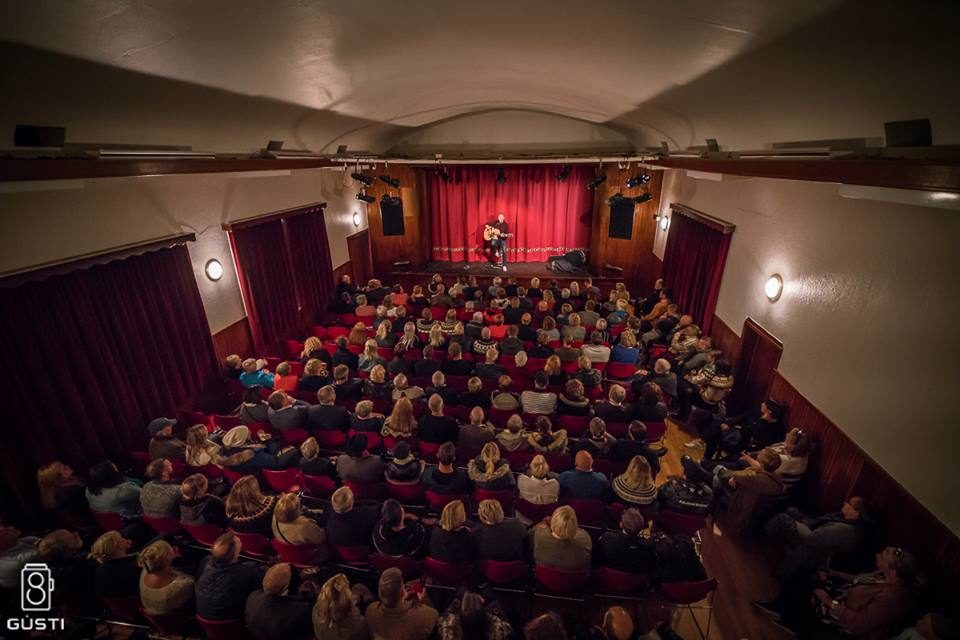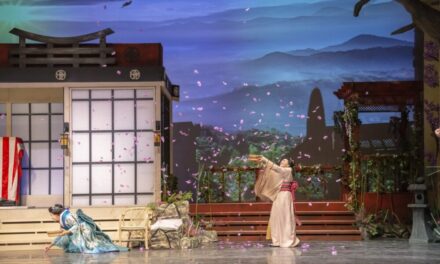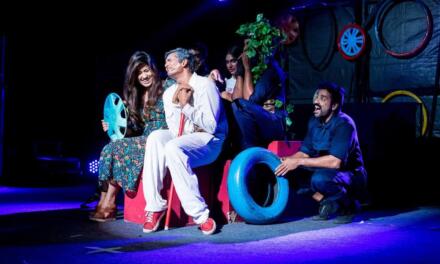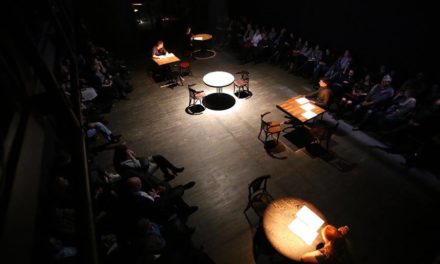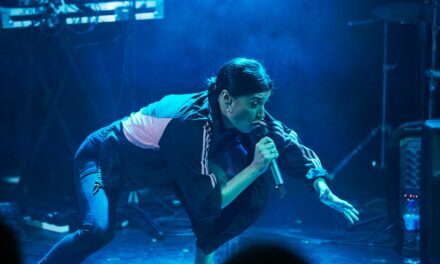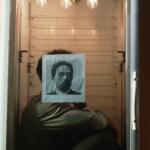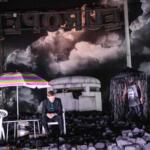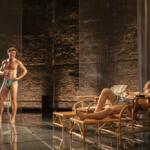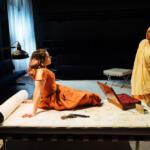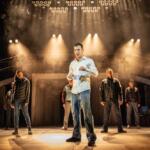Suðureyri, a small fishing village found in a fjord at the northern tip of the Icelandic Westfjords, has a population of around 270. Here, at the edge of the world, is where Act Alone, a solo performance festival, has been located for almost fifteen years. Founded by actor Elfar Logi Hannesson, the festival offers a space, perhaps an unconventional one but space nonetheless, for solo performers to present their work, the only rule being that they have to perform the piece alone. Like most good rules this particular one is somewhat flexible but serves as a baseline for the festival’s tone. The theatre is at the heart of the programming but poets, musicians and visual artists also regularly perform. Great effort is made to both pay the performers and keep the events free of charge for the audience.
Until the mid-1990s, the town was isolated, cornered off by the surrounding mountain passes, and self-sufficient, with most services located in the village. In 1996 a tunnel through the mountain pass between Sugandafjordur, where Sudureyri lies, and the much bigger Isafjordur was opened. With more connectivity, everyday life transforms. Now many of the small population work in Isafjordur and services are now centralised there.
This might seem like a long setup for a discussion about a solo performance festival in a remote fishing village in the Westfjords but context is crucial, especially in the Icelandic countryside. Act Alone is now in its fourteenth year and when the festival started in 2004 four events were presented. In 2017 there were almost twenty. In its infancy, the festival was held in Isafjordur but relocated to the much smaller Sudureyri in 2012. This might seem an odd decision; to move such a precocious and not-so-easily funded festival to an even remoter place. However, it actually made all the difference as the move gave the festival a unique identity, framed the events within the village and audience numbers actually increased, peaking at a little more than 3000 this year.
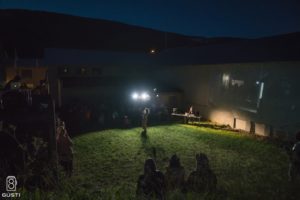
Una Bjorg Bjarnadottir in Vera, performed behind the communal hall
Photo by Ágúst Atlason
The capacity of the communal hall in Sudureyri is just under 200 and it was full on the first night, remaining so for most of the evening performances throughout the festival. Adding more chairs was common practice, as was seeing audience members standing wherever they could find floor space. During the 20th century, these communal halls were the epicentre of small town life in the country, taking the place of the home and/or the church as a gathering place for the community. Most of them were built during times of economic boom such as the 1950s but have increasingly lost their importance in the 21st century as leisure activities have changed yet again. Necessity and availability are valid reasons for performing at the local community hall in Sudureyri but it is also a political act. Act Alone underlines the halls value and role by making it the beating heart of the festival. Rumour is that funding has finally become available to refurbish the hall which, despite its charm, is just barely functional in its current state.
The communal hall also touches on a very contested and flammable subject matter in the Icelandic art community: Funding for professional art projects in the countryside. Iceland has a very strong history of amateur theatre where the communal halls played a big part.
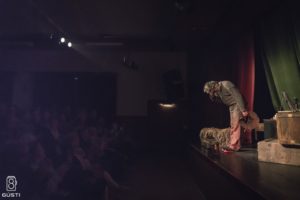
Elfar Logi Hannesson takes a bow after performing Gisli from Uppsalir. Photo by Agust Atlason
But like in many other European nations the mass movement from the smaller towns to the suburbs proved a disaster for the rural infrastructure. In the last few years more and more civil service positions are being outsourced from Reykjavik to more remote areas in a bid to drive back the mass move to the capital region. However, arts funding seems to fall far behind as it is often tied to the larger city councils and professional opportunities are few and far between in towns like Akureyri in the north, Isafjordur in the west and Egilsstadir in the east.
Another contested issue is the categorization of arts funding as it is now under the umbrella of ‘creative industries’ which covers a massive cohort of projects. Thus, funding often finds its way to projects catering to technological developments and tourists, not the professional artists who seek employment and opportunities outside of the capital.
Context is crucial. And so are facts. They clearly show that arts funding in the countryside of Iceland is severely underdeveloped and lacking. Which is why the Act Alone Solo Performance Festival remains a unique beacon of hope for a performing arts future in the rural areas of Iceland that will most certainly be hard-won.
This post was written by the author in their personal capacity.The opinions expressed in this article are the author’s own and do not reflect the view of The Theatre Times, their staff or collaborators.
This post was written by Sigríður Jónsdóttir.
The views expressed here belong to the author and do not necessarily reflect our views and opinions.

